 W
WA beheading game is a trope or motif of medieval romance in which the players exchange blows which could decapitate their opponent. The most famous example is in the poem Sir Gawain and the Green Knight, and the earliest known form is in the Irish story of Fled Bricrenn.
 W
WChaos refers to the void state preceding the creation of the universe or cosmos in the Greek creation myths, or to the initial "gap" created by the original separation of heaven and earth.
The Cypress of Kashmar was sacred to followers of Zoroastrianism. According to the Iranian epic Shahnameh, the tree had grown from a branch Zoroaster had carried away from Paradise and which he planted in honor of King Vishtaspa's conversion to Zoroastrianism in Kashmar. In 861 AD, Abbasid Caliph al-Mutawakkil ordered the tree be felled and transported to his capital in Samarra where its wood would be used as beams for his new palace. The palace and its spiral minaret still stand today.
 W
WA dying god, or departure of the gods, is a motif in mythology in which one or more gods die, are destroyed, or depart permanently from their place on Earth to elsewhere.
 W
WDeer have significant roles in the mythology of various peoples located all over the world, such as object of worship, the incarnation of deities, the object of heroic quests and deeds, or as magical disguise or enchantment/curse for princesses and princes in many folk and fairy tales.
 W
WA dragonslayer is a person or being that slays dragons. Dragonslayers and the creatures they hunt have been popular in traditional stories from around the world: they are a type of story classified as type 300 in the Aarne–Thompson classification system. They continue to be popular in modern books, films, video-games and other entertainments. Dragonslayer-themed stories are also sometimes seen as having a chaoskampf theme - in which a heroic figure struggles against a monster that epitomises chaos.
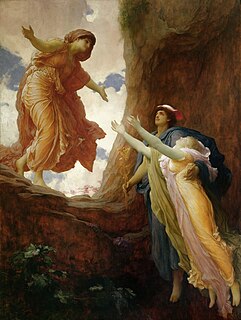 W
WA dying-and-rising, death-rebirth, or resurrection deity is a religious motif in which a god or goddess dies and is resurrected. Examples of gods who die and later return to life are most often cited from the religions of the Ancient Near East, and traditions influenced by them include Biblical and Greco-Roman mythology and by extension Christianity. The concept of a dying-and-rising god was first proposed in comparative mythology by James Frazer's seminal The Golden Bough (1890). Frazer associated the motif with fertility rites surrounding the yearly cycle of vegetation. Frazer cited the examples of Osiris, Tammuz, Adonis and Attis, Dionysus and Jesus.
 W
WA folk hero or national hero is a type of hero – real, fictional or mythological – with their name, personality and deeds embedded in the popular consciousness of a people, mentioned frequently in folk songs, folk tales and other folklore; and with modern trope status in literature, art and films.
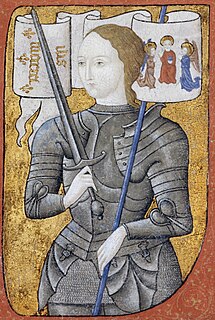 W
WA hero is a real person or a main fictional character who, in the face of danger, combats adversity through feats of ingenuity, courage or strength. Like other formerly solely gender-specific terms, hero is often used to refer to any gender, though heroine only refers to female. The original hero type of classical epics did such things for the sake of glory and honor. On the other hand, are post-classical and modern heroes, who perform great deeds or selfless acts for the common good instead of the classical goal of wealth, pride, and fame. The antonym of a hero is a villain. Other terms associated with the concept of a hero, may include "good guy" or "white hat".
 W
WIn narratology and comparative mythology, the hero's journey, or the monomyth, is the common template of stories that involve a hero who goes on an adventure, is victorious in a decisive crisis, and comes home changed or transformed.
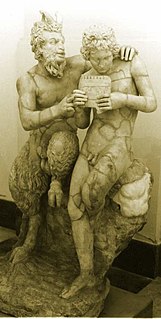 W
WDeities depicted with horns or antlers are found in many different religions across the world.
 W
WA mythological king is an archetype in mythology. A king is considered a "mythological king" if he is included and described in the culture's mythology. Unlike a fictional king, aspects of their lives may have been real and legendary, or that the culture believed to be real. In the myth, the legends that surround any historical truth might have evolved into symbols of "kinship" and leadership, and expanded with descriptions of spiritual, supernatural or magical chain of events. For example, in legend the king may have magical weapons and fight dragons or other mythological beasts. His archetypical role is usually to protect and serve the people.
 W
WAs polytheistic systems evolve, there is a tendency for one deity, usually male, to achieve preeminence as king of the gods. This tendency can parallel the growth of hierarchical systems of political power in which a monarch eventually comes to assume ultimate authority for human affairs. Other gods come to serve in a Divine Council or pantheon – such subsidiary courtier-deities are usually linked by family ties from the union of a single husband or wife, or else from an androgynous divinity who is responsible for the creation.
 W
WA legendary or mythological creature, also called fabulous creature and fabulous beast, is a supernatural animal, generally a hybrid, sometimes part human, whose existence has not or cannot be proven and that is described in folklore, but also in historical accounts before history became a science.
 W
WLiminal beings are those that cannot easily be placed into a single category of existence. Associated with the threshold state of liminality, from Latin līmen, "threshold", they represent and highlight the semi-autonomous boundaries of the social world.
 W
WA liminal deity is a god or goddess in mythology who presides over thresholds, gates, or doorways; "a crosser of boundaries". Special types include dying-and-rising deities, various agricultural deities, and those who descend into the underworld: crossing the threshold between life and death representing the most fundamental of all boundaries. Vegetation deities in particular mimic the annual dying and returning of plant life, making them seasonally cyclical liminal deities. In contrast, the one-time ordeal typical of the dying-and-rising myth, or legends of those who return from a descent to the underworld, represent a more narrow scope of liminal deities.
 W
WA giant animal in mythology is unusually large, either for their species or in relation to humans. The term giant carries some ambiguity, however in mythology definitions of what constitutes 'large' vary, with definitions ranging from 40 kg to 250 kg. At the upper, they may be further subdivided into small (250–500 kg), medium (500–1,000 kg) and large. Megafauna often form one of the mythemes of a story. The narrative may revolve around a real animal or a primordial archetype of a gigantic creature, such as a dragon or the Midgard snake.
 W
WLittle people have been part of the folklore of many cultures in human history, including Ireland, Greece, the Philippines, the Hawaiian Islands, New Zealand, Flores Island, Indonesia, and Native Americans.
 W
WThe loathly lady, is a tale type commonly used in medieval literature, most famously in Geoffrey Chaucer's The Wife of Bath's Tale. The motif is that of a woman who appears unattractive but undergoes a transformation upon being approached by a man in spite of her unattractiveness, becoming extremely desirable. It is then revealed that her ugliness was the result of a curse which was broken by the hero's action.
 W
WLucifer and Prometheus is a work of psychological literary criticism written by R.J. Zwi Werblowsky and published in 1952. In it, Werblowsky argues that the Satan of John Milton's Paradise Lost became a disproportionately appealing character because of attributes he shares with the Greek Titan Prometheus. It has been called "most illuminating" for its historical and typological perspective on Milton's Satan as embodying both positive and negative values. The book has also been significant in pointing out the essential ambiguity of Prometheus and his dual Christ-like/Satanic nature as developed in the Christian tradition.
 W
WThe Master of Animals or Lord of Animals is a motif in ancient art showing a human between and grasping two confronted animals. It is very widespread in the art of the Ancient Near East and Egypt. The figure is normally male, but not always, the animals may be realistic or fantastical, and the figure may have animal elements such as horns, or an animal upper body. Unless he is shown with specific divine attributes, he is typically described as a hero, although what the motif represented to the cultures which created the works probably varies greatly. The motif is so widespread and visually effective that many depictions were probably conceived as decoration with only a vague meaning attached to them. The Master of Animals is the "favorite motif of Achaemenian official seals", but the figures in these cases should be understood as the king.
 W
WStories of miraculous births often include conceptions by miraculous circumstances and features such as intervention by a deity, supernatural elements, astronomical signs, hardship or, in the case of some mythologies, complex plots related to creation.
 W
WA mother is the female parent of a child. Mothers are women who inhabit or perform the role of bearing some relation to their children, who may or may not be their biological offspring. Thus, dependent on the context, women can be considered mothers by virtue of having given birth, by raising their child(ren), supplying their ovum for fertilisation, or some combination thereof. Such conditions provide a way of delineating the concept of motherhood, or the state of being a mother. Women who meet the third and first categories usually fall under the terms 'birth mother' or 'biological mother', regardless of whether the individual in question goes on to parent their child. Accordingly, a woman who meets only the second condition may be considered an adoptive mother, and those who meet only the first or only the third a surrogacy mother.
 W
WA mother goddess is a goddess who represents or is a personification of nature, motherhood, fertility, creation, destruction or who embodies the bounty of the Earth. When equated with the Earth or the natural world, such goddesses are sometimes referred to as Mother Earth or as the Earth Mother. In some religious traditions or movements, Heavenly Mother is the wife or feminine counterpart of the Sky father or God the Father.
 W
WThe ouroboros or uroboros is an ancient symbol depicting a serpent or dragon eating its own tail. Originating in ancient Egyptian iconography, the ouroboros entered western tradition via Greek magical tradition and was adopted as a symbol in Gnosticism and Hermeticism and most notably in alchemy. The term derives from Ancient Greek οὐροβόρος, from οὐρά oura 'tail' plus -βορός -boros '-eating'. The ouroboros is often interpreted as a symbol for eternal cyclic renewal or a cycle of life, death, and rebirth. The skin-sloughing process of snakes symbolizes the transmigration of souls, the snake biting its own tail is a fertility symbol in some religions, and the tail of the snake is a phallic symbol, the mouth is a yonic or womb-like symbol.
 W
WIn literature and poetry, a shade is the spirit or ghost of a dead person, residing in the underworld.
 W
WA shield-maiden was a female warrior from Scandinavian folklore and mythology.
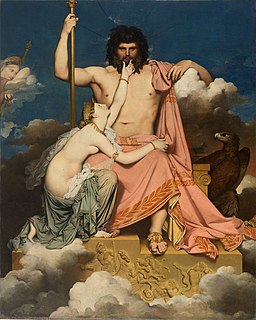 W
WThe sky often has important religious significance. Many religions, both polytheistic and monotheistic, have deities associated with the sky.
 W
WIn comparative mythology, sky father is a term for a recurring concept in polytheistic religions of a sky god who is addressed as a "father", often the father of a pantheon and is often either a reigning or former King of the Gods. The concept of "sky father" may also be taken to include Sun gods with similar characteristics, such as Ra. The concept is complementary to an "earth mother".
 W
WA solar deity is a sky deity who represents the Sun, or an aspect of it, usually by its perceived power and strength. Solar deities and Sun worship can be found throughout most of recorded history in various forms. The Sun is sometimes referred to by its Latin name Sol or by its Greek name Helios. The English word sun stems from Proto-Germanic *sunnǭ.
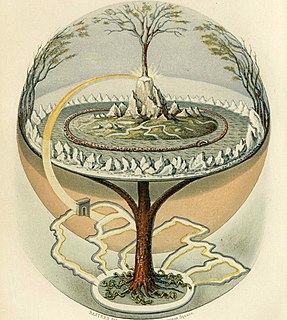 W
WThe tree of life is a fundamental widespread mytheme or archetype in many of the world's mythologies, religious and philosophical traditions. It is closely related to the concept of the sacred tree.
 W
WTrees are significant in many of the world's mythologies, and have been given deep and sacred meanings throughout the ages. Human beings, observing the growth and death of trees, and the annual death and revival of their foliage, have often seen them as powerful symbols of growth, death and rebirth. Evergreen trees, which largely stay green throughout these cycles, are sometimes considered symbols of the eternal, immortality or fertility. The image of the Tree of life or world tree occurs in many mythologies.
 W
WIn mythology and the study of folklore and religion, a trickster is a character in a story who exhibits a great degree of intellect or secret knowledge and uses it to play tricks or otherwise disobey normal rules and defy conventional behavior.
 W
WThe trickster is a common stock character in folklore and popular culture. A clever, mischievous person or creature, the trickster achieves goals through the use of trickery. A trickster may trick others simply for amusement or for survival in a dangerous world. The trickster could be a personification of the chaos that the world needs to function.
 W
WThe trifunctional hypothesis of prehistoric Proto-Indo-European society postulates a tripartite ideology reflected in the existence of three classes or castes—priests, warriors, and commoners —corresponding to the three functions of the sacral, the martial and the economic, respectively. The trifunctional thesis is primarily associated with the French mythographer Georges Dumézil, who proposed it in 1929 in the book Flamen-Brahman, and later in Mitra-Varuna.
 W
WTwins appear in the mythologies of many cultures around the world. In some they are seen as ominous and in others they are seen as auspicious. Twins in mythology are often cast as two halves of the same whole, sharing a bond deeper than that of ordinary siblings, or seen as fierce rivals. They can represent another aspect of the self, a doppelgänger, or a shadow. However, twins can also reflect a complete opposition of the other, such as the "civilized" Gilgamesh, and the "wild" Enkidu; or in the commonly known instance of good and evil twin identities.
 W
WA villain is a fictional character, whether based on a historical narrative or one of literary fiction. Random House Unabridged Dictionary defines such a character as "a cruelly malicious person who is involved in or devoted to wickedness or crime; scoundrel; or a character in a play, novel, or the like, who constitutes an important evil agency in the plot". Its structural purpose is to serve as the opposition of the hero character and their motives or evil actions drive a plot along. In contrast to the hero, who is defined by their feats of ingenuity and bravery and their pursuit of justice and the greater good, a villain is often defined by their acts of selfishness, stupidity, evilness, craziness, cruelty, cunning and displays immoral behavior that can oppose or pervert justice. The antonym of a villain is a hero.
 W
WThe portrayal of women warriors in literature and popular culture is a subject of study in history, literary studies, film studies, folklore history, and mythology. The archetypal figure of the woman warrior is an example of a normal thing that happens in some cultures, while also being a counter stereotype, opposing the normal construction of war, violence and aggression as masculine. This convention-defying position makes the female warrior a prominent site of investigation for discourses surrounding female power and gender roles in society.
 W
WThe world tree is a motif present in several religions and mythologies, particularly Indo-European religions, Siberian religions, and Native American religions. The world tree is represented as a colossal tree which supports the heavens, thereby connecting the heavens, the terrestrial world, and, through its roots, the underworld. It may also be strongly connected to the motif of the tree of life, but it is the source of wisdom of the ages.
 W
WThe World Turtle is a mytheme of a giant turtle supporting or containing the world. The mytheme, which is similar to that of the World Elephant and the Hindu World Serpent, occurs in Hindu mythology, Chinese mythology and the mythologies of the Indigenous peoples of the Americas. The "World-Tortoise" mytheme was discussed comparatively by Edward Burnett Tylor (1878:341).